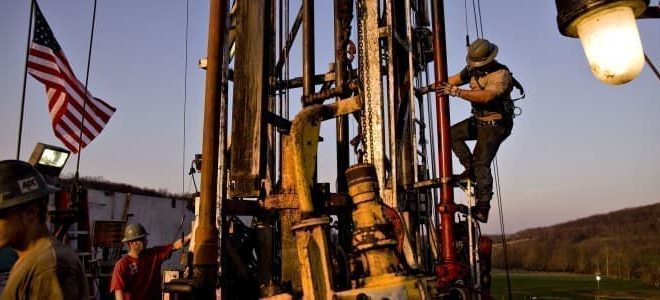U.S. shale was one of the big losers of the Saudi-Russian price war that many saw as a war on U.S. shale. Producers scrambled to stay afloat as prices sank back to lows not seen since 2016, and they are still scrambling. Banks are giving them the cold shoulder, worried that many will not be able to pay their debts. Is there a way out? According to various forecasting agencies, there is, but it will take a while. A Bloomberg analysis of forecasts for the shale industry made by outlets such as the International Energy Agency, energy consultancy Rystad, IHS Markit, Genscape, and Enervus suggests shale will be back on its feet by 2023, with production back to over 12 million bpd.
This is not a long time for a full recovery, really, especially given the current circumstances, including shut-in wells, abandoned drilling plans, tight cash, and, for many, looming bankruptcies.
As much as 30 percent of shale drillers could go under if oil prices fail to move substantially higher, Deloitte said in a recent study, as quoted by CNN. These 30 percent, the firm said, are technically insolvent at oil prices of $35 a barrel. Right now, West Texas Intermediate is higher than $35 but not by much. Oil is now trading closer to $35 than to $50—the level at which most shale drillers will be making money.
And they need to make money: banks have started cutting credit lines for industry players as they reassess their assets and the production that they promised would be realized from these assets. According to calculations by Moody’s and JP Morgan, cited by the Wall Street Journal, banks could reduce asset-backed loan availability for the industry by as much as 30 percent, which translates into tens of billions of dollars.
One can see the lenders’ perspective. They are in the business of lending in order to make money, and for that to happen, their borrowers must make money, too. But, it appears, most shale drillers have been consistently failing to turn a profit over the last 15 years, burning through $300 billion in cash and writing down $450 billion on invested capital, according to the Deloitte study.
But the shale industry is lean and mean, which is why it would rebound the moment prices rise high enough. As soon as WTI jumps above $55 a barrel and stays there for a while, shale drillers will start ramping up production again, according to the forecasters Bloomberg surveyed.
In fact, many are already ramping up: production of crude oil in the U.S. last week rose to 11 million bpd, according to the Energy Information Administration’s Weekly Petroleum Status Report, from 10.5 million bpd the previous week. That’s still over a million barrels daily less than what the U.S. was producing a year ago. It is, however, a sign of improvement in the industry.
This improvement, according to forecasters, may turn out to be only temporary, though. According to IHS Markit, the production increase will last for a few months, after which it will be followed by another decline. This is because the massive growth in production over the past ten years came at an equally massive expense in the form of fast decline rates.
Shale oil extraction is a capital-intensive business, even at the lowest breakeven prices. Shale drillers need to keep drilling new wells to maintain—and boost—production. For this, they need cash that they don’t have right now, and the banks are less willing than ever to supply it.
For this reason, the recovery of U.S. shale hinges on higher oil prices and OPEC+ knows it.

 Iran Energy News Oil, Gas, Petrochemical and Energy Field Specialized Channel
Iran Energy News Oil, Gas, Petrochemical and Energy Field Specialized Channel



